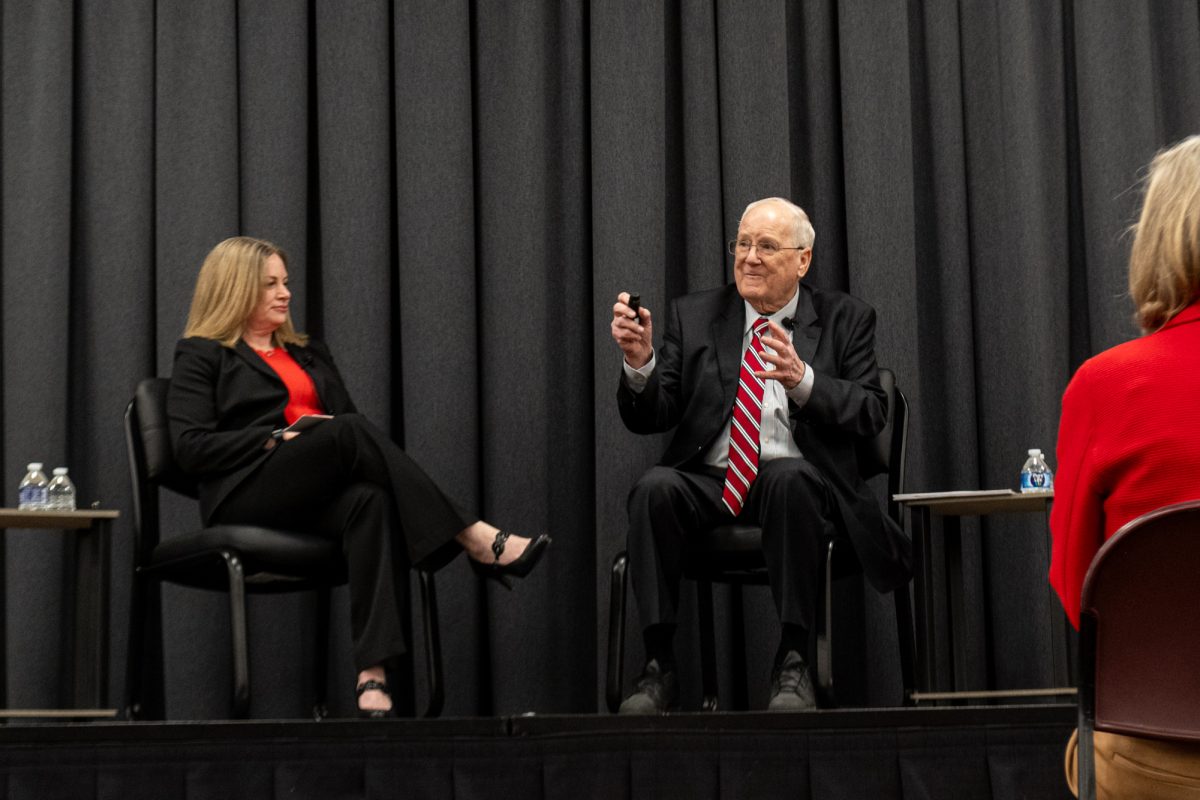Blue: Who watches the watchers – a look at media objectivity
February 11, 2011
Jon Stewart is no journalist. Jon Stewart is a comedian, a satirist.
When anyone says that Stewart is the “most trusted man in news” or “most trusted newscaster in America,” they’re referring to a summer 2009 poll by TIME Magazine. Two years ago they polled 9,411 volunteers, and still I hear people tell me how trusted Jon Stewart is. Basic statistics remind us that respondents volunteering for a poll are untrustworthy, and by extension, so is the poll itself.
Nonetheless, Stewart received 44 percent of the national vote. Compare that to his worldwide result of 49 percent.
Compare that also to the other “trusted newsmen” against whom his trust was measured: Brian Williams, Charlie Gibson and Katie Couric. None of them, frankly, inspire my trust. That Stewart is even considered a journalist by TIME Magazine disgusts me. It’s that kind of thinking that got CNN”s “Crossfire” canceled.
Does Stewart’s being a “journalist” in the eyes of TIME Magazine make Bill O’Reilly, Glenn Beck, Keith Olbermann or Rachel Maddow just as credible?
The base alloy of the matter is that journalism lies to itself. By the mere fact that they suffer from the human condition, reporters may not achieve true objectivity.
A large part of it is the issue of 24-hour cable news. Solid unbiased news, while it does occasionally pop up, cannot exist in perpetuity. It must be peppered with the partisan rhetoric that percolates today’s discourse and sullies it with talking points taken straight from party playbooks.
Media objectivity is an outright lie. I remember when a CNN representative spoke to one of my journalism classes. He claimed that FOX News occupies the right-of-center spot with MSNBC on the left, and CNN is positioned cozily in the center as a neutral news source for unbiased people.
I call bull. Nobody is without biases. To lack them is to lack humanity.
Objectivity is a noble goal, but an impossible one. CNN may consider itself above rivals on the left and right, but it is not without its biases.
Look at the Huffington Post merger with AOL. A very left-leaning website merges with a supposedly neutral news source. What should we think of that? Is it unfair to assume a bias in their stories hereafter?
So why do journalists want to claim objectivity when it can never be achieved?
It’s simple. There’s a centrist in all of us. No one wants to be a stereotypical foaming-at-the-mouth musket-wielding conservative, nor the oft-invoked tree-hugging communist-sympathizing liberal.
But the rose-tinted world journalists want so desperately to live in is but a farce. To prop up their flimsy claims, they say, “The facts are the facts.” But who decides which facts? Who cherry-picks them, reports them, and makes them part of a circulated narrative? How do we know those people are proper scions of the objective journalism god?
Take the issue of the Planned Parenthood story. I doubt many of you have heard about it, but in mid-January members of “Live Action,” a pro-life organization, conducted a hidden-camera investigation at a Planned Parenthood office in New Jersey.
Mimicking James O’Keefe’s ACORN videos, the duo solicited aid successfully from the branch manager, Amy Woodruff, despite their frank admission of human trafficking and underage prostitution. Woodruff, shown explaining how she bypasses Planned Parenthood’s auditing process, was fired after the video was released.
I don’t care about the ethics of it; it’s a noteworthy and relevant story, particularly given the firestorm surrounding H.R. 3.
Yet the story has received virtually no network coverage. Who decided that? As of this column’s writing, you type “Planned Parenthood” into Google News and this video is the first return. Who’s ignoring the news? Why isn’t that story part of a circulating narrative?
I think of journalists as the watchmen in Plato’s Republic. And yet I ask the same question of them that was asked of Socrates.
Who watches the watchers?





